Unless you enjoy people stepping on your toes, tourists poking you in the back and barely visible displays, avoid the National Museum of History’s (NMH) The Golden Age of the Qing: Treasures From the Shenyang Palace Museum (大清盛世—瀋陽故宮文物展) on weekends. Saturday afternoon found this reviewer squeezed into the exhibit’s dimly lit space with hundreds of other museumgoers keen to catch a glimpse of the garments, weapons, jewelry and furniture on loan from Shenyang Palace (瀋陽故宮), located in northeastern China and designated a UNESCO World Heritage Site in 2004.
The crowd at the entrance was three-people deep — a child had to be hoisted up to see the introductory contents. A guided tour of about 30 people managed to obscure entire displays — an easy feat, considering the maze of glass display cases visitors are forced to circumvent.
Despite this, The Golden Age of the Qing is not to be missed. The show follows on the heels of recent collaborations between the NMH and museums in China, and provides another “great breakthrough in cross-strait cultural exchange,” according to Chang Yu-tan (張譽騰), the museum’s director.
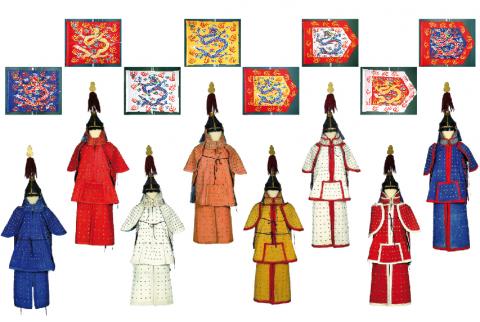
Photos courtesy of the National Museum of History
A year in the making, the top-down exhibit presents artifacts from the early seat of Manchurian power established after busybody chieftain Nurhaci united the region’s disparate nomadic tribes in the early 17th century.
Begun in 1625, Shenyang Palace was expanded in 1636, a decade after Huang Taijin (皇太極), Nurhaci’s son, ascended the throne. It was also during this time that Huang conquered northern China, crowned himself Qing emperor and changed the name Shenyang (瀋陽) to Shengjing (盛京), or “Flourishing Capital.” In 1644, after defeating Ming loyalists at the Battle of Shanhai Pass (山海關之戰), Emperor Shunzhi (順治皇帝) moved the Manchu seat of power to Beijing, but Shenyang retained some symbolic power.
Though the exhibit is presented in five sections — The Rise of the Manchus; Emperors and Empire; Warriors of the Eight Banners; Beauties of the Court; and Luxuries of the Court and the Imperial Life — it essentially tells one story in two parts.
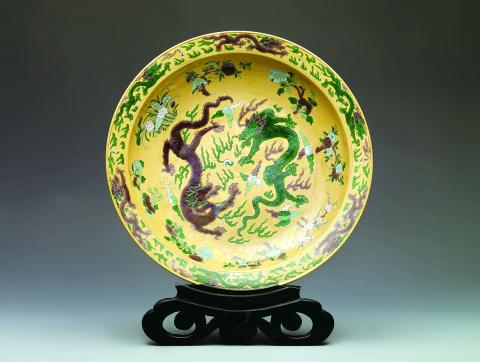
Photo courtesy of the National Museum of History
The first, common with exhibits of this kind, examines the imperial line beginning with Nurhaci. The second, less common, offers a glimpse of the fashions and mores of the imperial concubines. The two themes are linked by the Eight Banners (八旗), a hierarchical (class or caste) system of administration established by Nurhaci in 1605 (though it wasn’t fully implemented until 1642). The banners were employed in all facets of life, from hunting to entertainment and religious rituals.
The exhibit explains in detail the structure and purpose of each banner — the ethnicity of its members, their rank and pay, and how each was positioned on the field of battle. The color-coded armor worn by each banner’s soldiers is here displayed along with their corresponding flags. The bows and arrows used by the cavalry and swords and daggers used by the infantry are shown alongside colorful paintings depicting military formations. Historians agree that the Eight Banner system made the Manchu army a potent military force.
The organization of the banner system also extended to the imperial court, as is revealed by the somewhat euphemistically titled Beauties of the Court section. The clothing and jewelry of the emperor’s concubines were ordered along the same lines as the military.
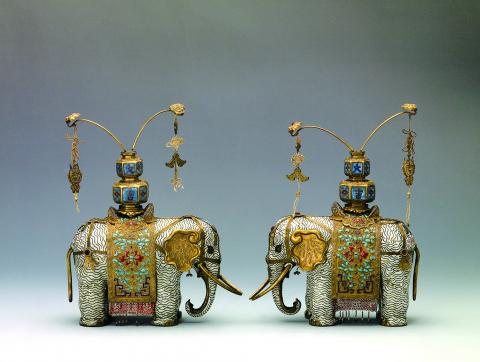
Photo courtesy of the National Museum of History
“No expression of personality was allowed. Forms of costume, be it court robe or ceremonial robe, [followed] set regulations with colors and decorative patters as symbols of rank,” states one of the many excellent essays in the exhibition catalogue.
The museum, to its credit, gives over considerable space to these lovely garments: a court vest of midnight black bearing a golden dragon, or a gorgeous yellow silk robe with vivid butterfly designs in various hues of blue. As with much of the armor, these costumes are displayed in rectangular glass cases, providing visitors with the opportunity to view the intricate stitch work and insignia of rank from all angles.
The displays include the accessories worn by these women — the kind of flourishes that ensured they were presentable to the emperor. Enameled hand mirrors, cosmetics boxes inlaid with lapis lazuli, silk fans and shoes and jewelry made from emerald hint that these “ladies” were bestowed with one purpose: to serve the emperor and produce his descendents.
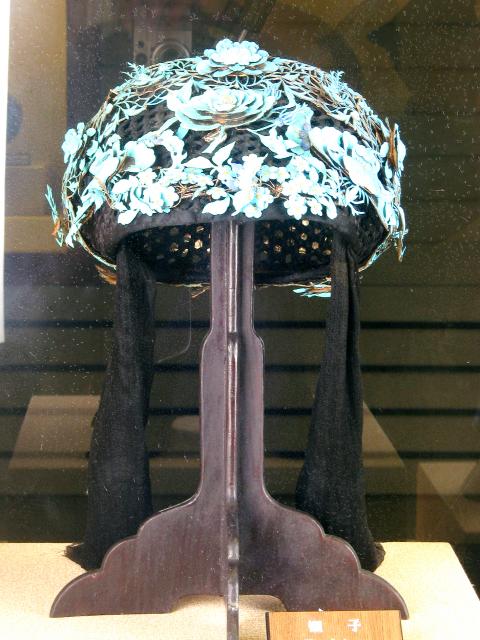
Photo courtesy of the National Museum of History
There is much else on view here. One room presents in detail the Battle for Shanhai Pass while another room houses a small-scale replica of Shenyang Palace. Some will be delighted by the section on Manchu cuisine: “When dining at home, Manchus preferred hot pot.” There is even a display on “eco-friendly” iceboxes, which were used to keep meat and vegetables fresh during the summer months. But it is the numerous gowns, coats of armor, jewelry and weapons that make this show stand out.
And beyond admiring the beautiful artifacts, there is a lesson to be learned. Ironically, the highly ordered and inflexible Eight Banner system, which facilitated the Manchus’ rise to power in the 17th century, also contributed to the Qing Dynasty’s downfall more than 250 years later.

Photo courtesy of the National Museum of History
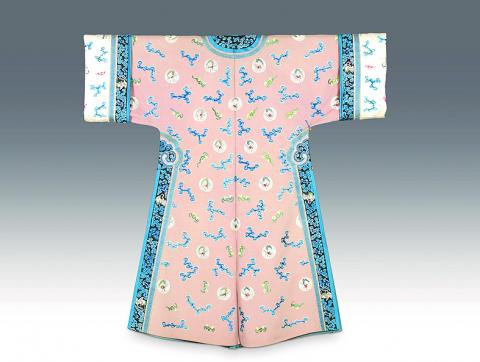
Photo courtesy of the National Museum of History

Eric Finkelstein is a world record junkie. The American’s Guinness World Records include the largest flag mosaic made from table tennis balls, the longest table tennis serve and eating at the most Michelin-starred restaurants in 24 hours in New York. Many would probably share the opinion of Finkelstein’s sister when talking about his records: “You’re a lunatic.” But that’s not stopping him from his next big feat, and this time he is teaming up with his wife, Taiwanese native Jackie Cheng (鄭佳祺): visit and purchase a

April 7 to April 13 After spending over two years with the Republic of China (ROC) Army, A-Mei (阿美) boarded a ship in April 1947 bound for Taiwan. But instead of walking on board with his comrades, his roughly 5-tonne body was lifted using a cargo net. He wasn’t the only elephant; A-Lan (阿蘭) and A-Pei (阿沛) were also on board. The trio had been through hell since they’d been captured by the Japanese Army in Myanmar to transport supplies during World War II. The pachyderms were seized by the ROC New 1st Army’s 30th Division in January 1945, serving

The People’s Republic of China (PRC) last week offered us a glimpse of the violence it plans against Taiwan, with two days of blockade drills conducted around the nation and live-fire exercises not far away in the East China Sea. The PRC said it had practiced hitting “simulated targets of key ports and energy facilities.” Taiwan confirmed on Thursday that PRC Coast Guard ships were directed by the its Eastern Theater Command, meaning that they are assumed to be military assets in a confrontation. Because of this, the number of assets available to the PRC navy is far, far bigger

The 1990s were a turbulent time for the Chinese Nationalist Party’s (KMT) patronage factions. For a look at how they formed, check out the March 2 “Deep Dives.” In the boom years of the 1980s and 1990s the factions amassed fortunes from corruption, access to the levers of local government and prime access to property. They also moved into industries like construction and the gravel business, devastating river ecosystems while the governments they controlled looked the other way. By this period, the factions had largely carved out geographical feifdoms in the local jurisdictions the national KMT restrained them to. For example,